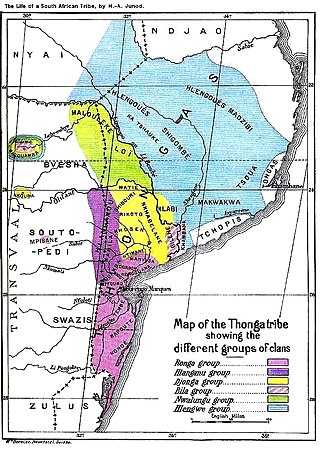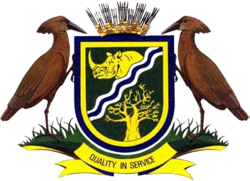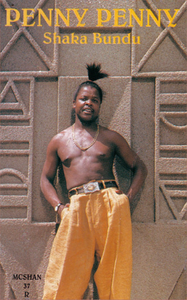Related Research Articles

The South African music scene includes both popular (jive) and folk forms like Zulu isicathamiya singing and harmonic mbaqanga. Other popular (Afropop) genres are marabi, mbube, afro fusion, house music, South African pop music, rock music, hip hop (motswako) and South African gospel.

iSimangaliso Wetland Park is situated on the east coast of KwaZulu-Natal, South Africa, about 235 km (146 mi) north of Durban by road. It is South Africa's third-largest protected area, spanning 280 km (170 mi) of coastline, from the Mozambican border in the north to Mapelane south of the Lake St. Lucia estuary, and made up of around 3,280 km2 of natural ecosystems, managed by the iSimangaliso Authority. The park includes:

The South Africa men's national soccer team represents South Africa in men's international soccer and it is run by the South African Football Association, the governing body for Soccer in South Africa. The team's nickname is Bafana Bafana, and South Africa's home ground is FNB Stadium, which is located in Johannesburg. The team's greatest result was winning the Africa Cup of Nations at home in 1996. The team is a member of both FIFA and Confederation of African Football (CAF). The team remains one of the best teams on the continent.

The Tsonga people are a Bantu ethnic group primarily native to Southern Mozambique and South Africa. They speak Xitsonga, a Southern Bantu language. A very small number of Tsonga people are also found in Zimbabwe and Northern Eswatini. The Tsonga people of South Africa share some history with the Tsonga people of Southern Mozambique, and have similar cultural practices, but differ in the dialects spoken.

First National Bank Stadium or simply FNB Stadium, also known as Soccer City and The Calabash, is an association football (soccer) and Rugby union stadium located in Nasrec, bordering the Soweto area of Johannesburg, South Africa. The site is managed by Stadium Management South Africa (SMSA) and is home of Kaizer Chiefs F.C. in the South African Premier Soccer League as well as the venue for key fixtures for the South Africa national football team.

Bidvest Wits Football Club, (simply often known as Wits University F.C. or Wits) was a South African professional football club from Johannesburg which played in the Premier Soccer League the first-tier of South African league football system. It was nicknamed "The Clever Boys" or "The Students" because of the close affiliation with the University of the Witwatersrand.

The Vhembe District Municipality is one of the 5 districts of the Limpopo province of South Africa. It is the northernmost district of the country and shares its northern border with the Beitbridge District in Zimbabwe and on the east with the Gaza Province in Mozambique. Vhembe consists of all the territories that were part of the former Venda Bantustan; however, two large densely populated districts of the former Tsonga homeland of Gazankulu, in particular, Hlanganani and Malamulele, were also incorporated into the municipality, hence the ethnic diversity of the district. The seat is Thohoyandou, the capital of the former Venda Bantustan. According to the 2011 census, the majority of the municipality's 800,000 inhabitants spoke TshiVenda as their mother language, while 400,000 spoke Xitsonga as their home language. However, the Tsonga people form the majority south of the Levubu River, while the Venda are the minority south of Levubu at 15%. The Sepedi speakers number 27,000. The district code is DC34.
The Chopi are a Bantu ethnic group of Mozambique. They have lived primarily in the Zavala region of southern Mozambique, in the Inhambane Province. They traditionally lived a life of subsistence agriculture, traditionally living a rural existence, although many were displaced or killed in the civil war that followed Mozambique's liberation from Portuguese colonial rule in 1975. In addition, drought forced many away from their homeland and into the nation's cities.

The xibelani dance is an indigenous dance of the Tsonga women of the Limpopo province in northern South Africa. The name of the dance comes from the native Xitsonga language and it can translate to "hitting to the rhythm", for example, the concept "xi Bela ni vunanga". The name "xibelani" typically refers to the dance style while the skirt itself is referred to as "tinguvu", however, the term "xibelani" is sometimes used to refer to both the dance and the skirt.
Dr Thomas Hasani "Shinyori" Chauke is a South African Xitsonga musician. Chauke was granted an honorary doctorate in African languages for the role his music has played in the development of the Xitsonga language.
Valdezia is a sprawling rural settlement situated at the foothills of the Soutpansberg mountain range in Louis Trichardt, Limpopo Province, South Africa. It was formerly known as Albasini before Swiss Missionaries renamed it Valdezia in 1875. The village itself was formally established in 1820 by Tsonga refugees who were fleeing despotic rule from Soshangane. It is roughly 10 km east of Elim Hospital in the Hlanganani district in the former Gazankulu homeland, South Africa. It was the site of a Swiss mission station, and it was named after the Swiss canton of Vaud. Valdezia's population, according to the official census of 2011, currently stands at between 7,600 and 8,000 people. It is considered the birthplace of the written Tsonga language in South Africa.
Nthato Monde James Mokgata, known by his stage name Spoek Mathambo, is a South African artist, producer, singer-songwriter and rapper. Mathambo rose to fame in the late 2000s with his fusion of a wide array of musical influences. He is known for coining the term ‘Township Tech’, to describe his sound.

"Turn Down for What" is a song by French record producer DJ Snake and American rapper Lil Jon released on December 18, 2013. The song and its viral music video popularized the use of the phrase. The song was particularly successful in North America, where it has earned eight platinum certifications in the United States. In late 2020, seven years after it was released, the video passed 1 billion views on YouTube.

Nozinja is a South African musician, producer and DJ, credited with the creation and popularisation of the 'shangaan electro' genre of African dance music, influenced by traditional folk, Tsonga disco, Kwaito house and township backstreet dance styles from the Limpopo region of South Africa.

Nozinja Lodge is the debut studio album by South African artist Nozinja, released on Warp on June 1, 2015. It peaked at number 13 on Billboard's World Albums chart.

Shaka Bundu is the debut album by South African musician Penny Penny released in 1994. Penny was discovered in a Johannesburg recording studio by producer Joe Shirimani, who was impressed by Penny's unique vocal style. Shirimani's record label Shandel Music enjoyed the demos he produced for Penny, and let the pair record an album together. Recorded over the space of one week using an Atari computer, Korg M1 synthesiser and reel-to-reel tape, the album blends the Tsonga disco style of music with American house music, reflecting the popularity of American and British electronic dance music in South Africa. It has been credited for pioneering a new style of Tsonga disco with its fusion of slow house rhythms, synthesised steel drums and Penny's modern vocal style atop traditional call-and-response female backing vocals.
Eric Kulani Giyani Nkovani, better known by his stage names Penny Penny and Papa Penny is a South African musician and politician, known affectionately as the "Shangaan Disco King" for the musical style he helped popularise.

Limpopo Champions League is the debut studio album by South African rapper Sho Madjozi. It was released on 14 December 2018 by Flourish and Multiply.
Bennet Skheto Baloyi known by his stage name President Benny Mayengani is a South African Xitsonga singer. He rose to fame following the release of his debut studio album Tiba Ben in 2011.
Marvin Ramalepe, widely known as DJ Spoko was a South African record producer and DJ. He gained fame for co-producing DJ Mujava's, "Township Funk" as well as his pioneering work in bacardi house.
References
- ↑ Bradshaw, Melissa. "What's The Name Of My Nation? Dancing Shangaan Electro With Nozinja". The Quietus. Retrieved March 26, 2014.
- ↑ Connors, Will. "Nozinja's Beats Help Soweto Dance Faster". Wall Street Journal. Retrieved April 2, 2014.
- ↑ "Shangaan Electro". Honest Jon's. Archived from the original on December 17, 2013. Retrieved April 2, 2014.
- ↑ Gedye, Lloyd. "Nozinja: The world at his feet". Mail & Guardian. Archived from the original on April 7, 2014. Retrieved April 2, 2014.
- ↑ Andrew, Ryce. "Various Artists - Shangaan Shake". Resident Advisor. Archived from the original on April 7, 2014. Retrieved April 2, 2014.
- ↑ "SHANGAAN SOUND ARCHITECT NOZINJA PREPS 12" FOR JIAOLONG UNDER XITSONGA DANCE ALIAS". Fact Mag. January 15, 2013. Archived from the original on April 7, 2014. Retrieved April 2, 2014.
- ↑ "Da Multi Snake - Volume 1". SHANGAANBANG. Archived from the original on April 2, 2015. Retrieved March 6, 2015.
- ↑ Bakare, Lanre (July 5, 2013). "Shangaan electro: The Soweto dance craze that's about to go global". The Guardian. Retrieved April 2, 2014.
- ↑ Chal, Ravens (July 17, 2013). ""NO SPEED, NO DANCE": SHANGAAN ELECTRO HITS LONDON". Fact Magazine. Archived from the original on April 7, 2014. Retrieved April 2, 2014.
- ↑ "RhythmTravels.com". Archived from the original on October 13, 2014. Retrieved October 8, 2014.